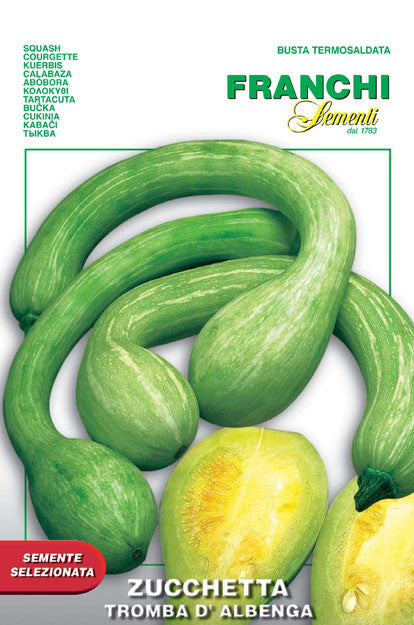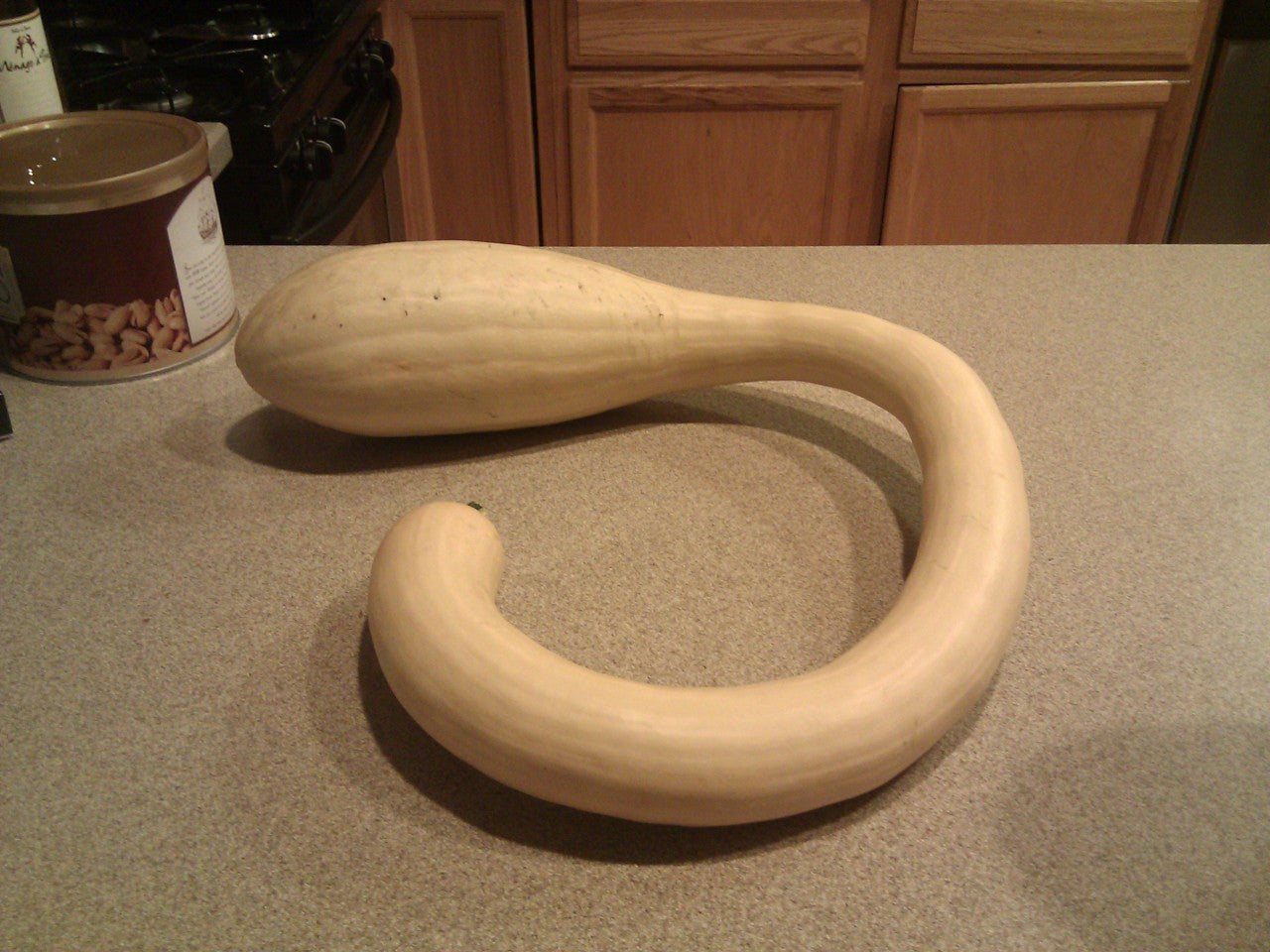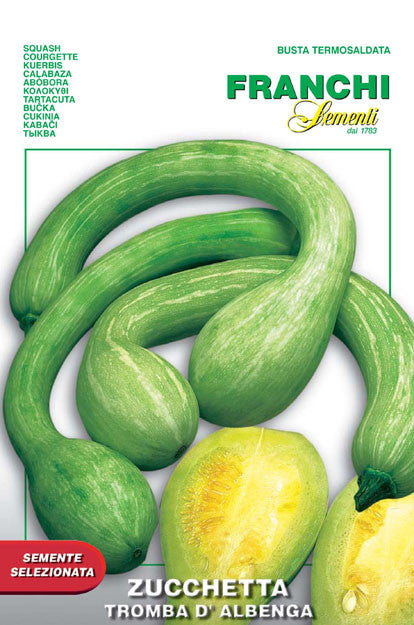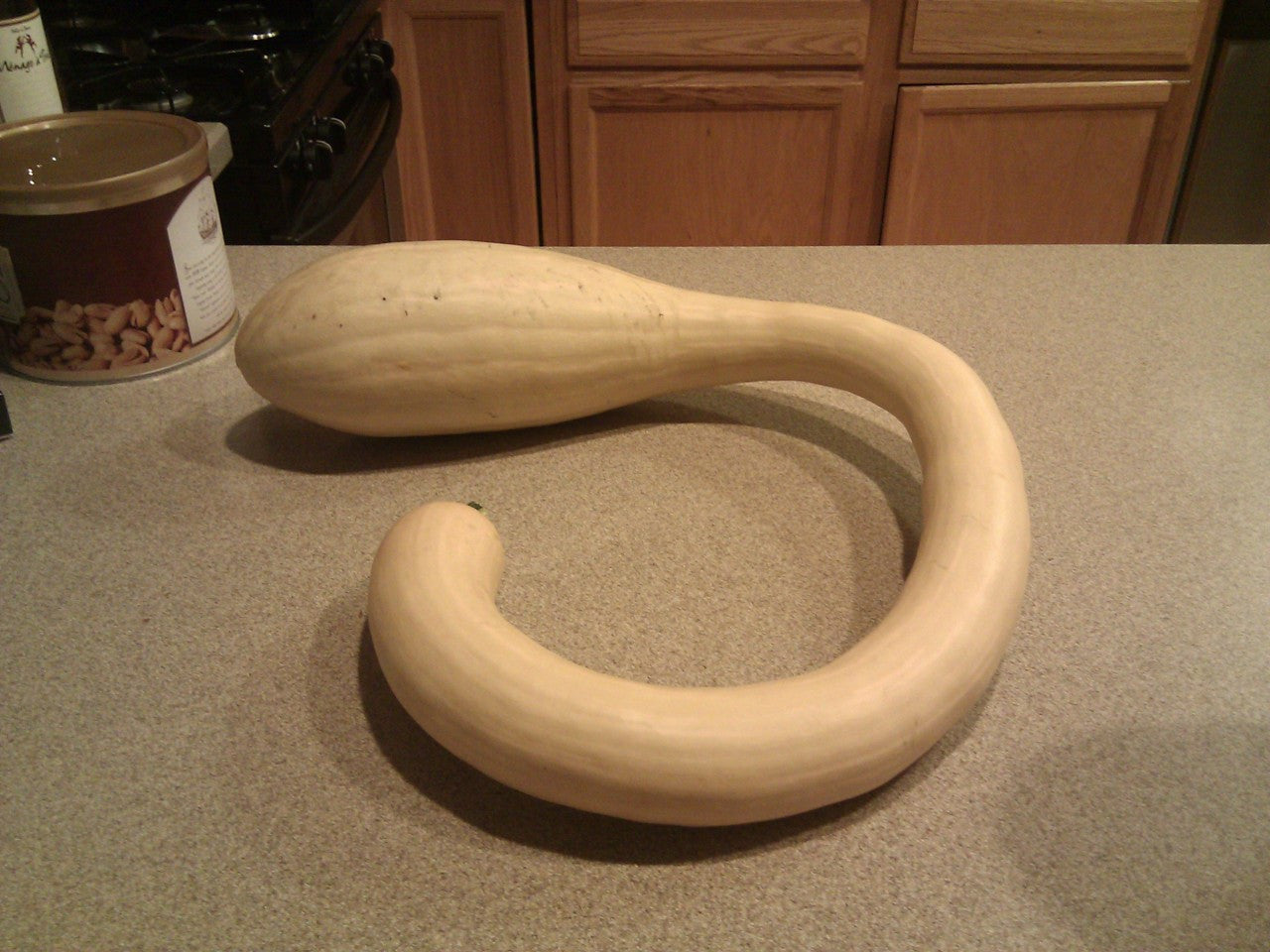PO Box 3908, Lawrence, KS 66046
seeds@growitalian.com
Call (785) 748-0959
Zucchetta Tromba d'Albenga (146-42)
Zucchetta Tromba d'Albenga (146-42)
Couldn't load pickup availability
Zucchetta Tromba d'Albenga. Also known as "Trombetta" or "Tromboncino". Zucchetta are long and curved, with a bulb at the end. Pick when young (6-10 inches) and cook like zucchini or let them get larger and roast them. The skin hardens up some as they get larger. They vine like a pumpkin, so give them plenty of space. 65-75 days. 5 gram packet.
Share


2022 was a challenging growing season in the Northern Willamette Valley. Experimented this season with this squash. It managed to sprout in the cold, gray, dampness that was our Spring and Early Summer. Grew well and produced some crazy looking fruit. The flavor of the squash was extremely mild. I'll plant this one again next year. It's fun.
I want to add my comments to everybody else: grow this squash!
Finally, in 2021, I decided it give it a try, as zucchini just don't make it very long here due to borers, squash bugs, and cucumber beetles. Trombocino is unfazed. It's an extremely vigorous squash that's very attractive. It does need a strong trellis or fence or a lot of space! I am training mine on the garden fence so most of the fruit have plenty of room to grow straight. I planted in late (in June), and it started to produce in early August when I had to pull out my last zucchini plants.
As somebody else wrote, the suggestion to pick the squash when 5-6" long does not work at all... because the unfertilized flowers are that long. The fruit does not get open its flower nor get fertilized till 8-9 long, so for summer squash 18" to 2ft sounds right. Th trellis or fence is best to have straight fruit (otherwise they curl - hence the name "trombocino"). As summer squash, they are delicious, firmer and less watery than zucchini. I am letting the first 2 fruit mature to become winter squash (so I can judge the quality), but now that the vine has found its pace, there is plenty of new fruit coming. The vine tips are also edible, and make a delicious saute with onions, garlic, and olive oil (or go more tropical and ginger and a couple of diced plum tomato and/or coconut milk). And of course the male flowers are also edible. So one plant... 4 veggies; gorgeous; bug resistant: it definitively is a winner.
Next year, I need to make sure to seed them earlier to start picking the fruit earlier. If you have trouble growing zucchini, give trombocino a try... but make sure you have space for it.
My favorite squash to grow is your trombochino. It is a delicious, firm summer squash when picked young like zucchini but much firmer with a better flavor as well as a tasty winter squash that keeps all winter. The flowers are also tasty battered and fried! It is very prolific and sprawling and also very beautiful to look at as it is growing.
I use the three sisters method of growing. I plant corn, pole beans and squash together with the corn in the middle, beans immediately around the corn 12 inches and the squash alternating between the beans. This system has worked very well for me for many years and I do not have to amend at all other than occasional worm castings and a cover crop in the winter which I sheet mulch with some compost and composted manure in the spring and then plant directly into it. The beans fix nitrogen and provide adequate fertilizer as the season goes on. I sometimes add a 4th plant, mammoth sunflowers. I love the trombochino as it sprawls out of my garden and into some young oak trees adjacent and downhill. As the squash grow, the vines climb the tree and the squash end up hanging out of the tree! This makes them easy to pick and it looks pretty amazing. I have gotten lots of comments from friends and neighbors.
We grow the Zucchetta Tromba d'Albenga squash. WONDERFUL !!
We start the seeds in small pots in early spring. When it's time for the garden, we plant about 10-12 inches apart along the garden fence .( Wire fencing.) The soil has added compost material.
The plants trellis the fence, leaving the beautiful fruit hanging.
We harvest small and medium size....young and tender. Several neighbors always look forward to their first, second, third, etc. serving.
One of our favorite ways to process the squash is to cut into spears and process in bread and butter mixture and can. Open a jar at family gatherings and oh what a hit!
If a squash gets too big, we use in fall decorations.
As a master gardener here in Oakland CA. we tested a number of summer squash to find the variety which does best in our climate. We discovered Zuchetta Tromba d'Albenga, purchased from Seeds From Italy was our favorite. This is a vining squash which does best on a trellis. The seed was direct sown on May 1 and continued producing into December! We don’t normally have frost but powdery mildew generally kills our summer squash by September. The plant is amazingly productive, the squash remains firm during cooking and is very tasty. It’s rumored you can let it grow into a winter squash but we couldn’t wait and consumed them early.


